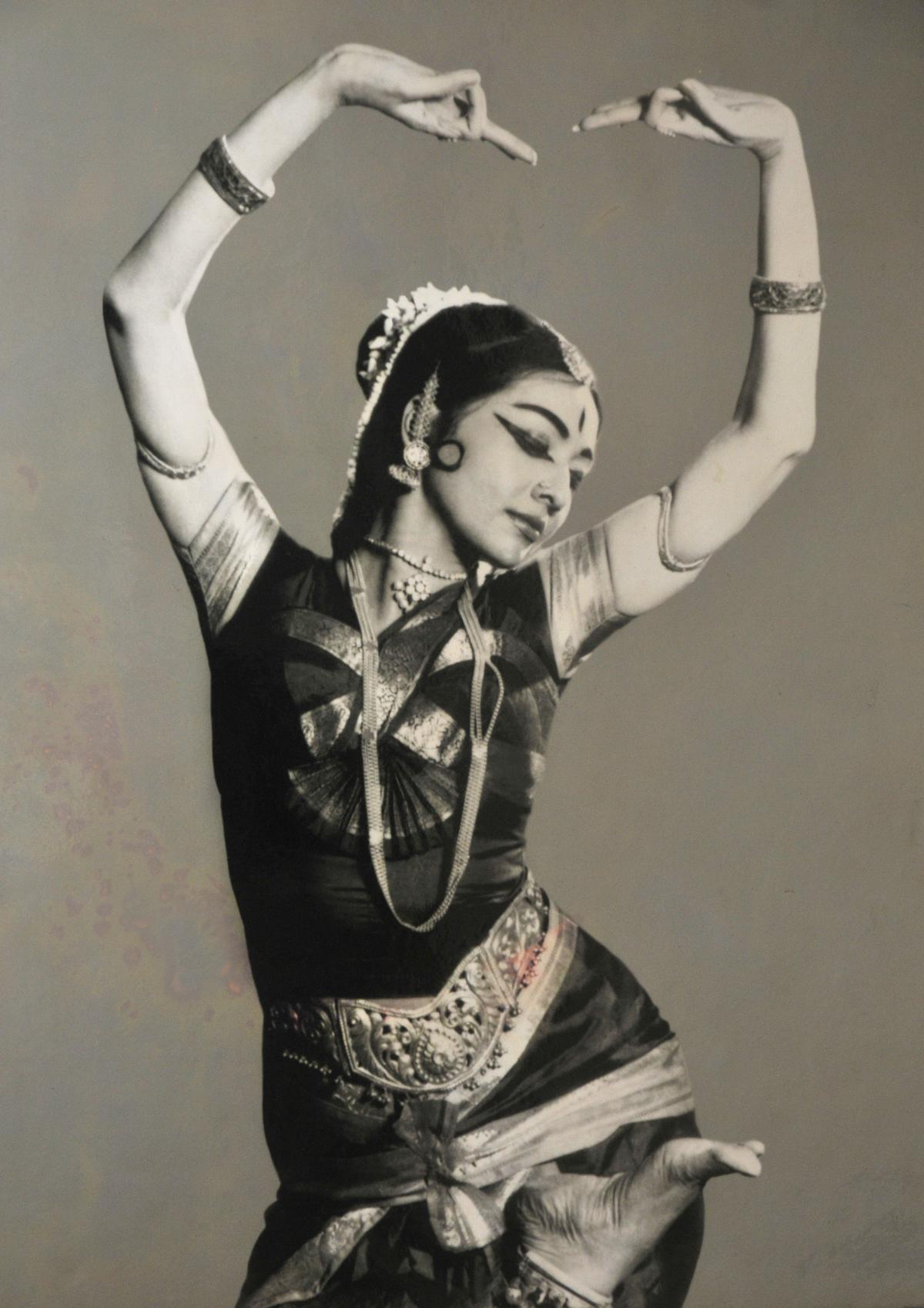How should Bharatanatyam be defined today?

Dancer Rukmini Vijayakumar is known for her new movement vocabulary
| Photo Credit: Christopher Duggan
On a cool December evening somewhere in Chennai, a dancer begins the third jathi in a varnam, leaping into the air and landing on her knees before breaking into a split, perfectly timed to the music. The entire front row of young dancers erupts in applause as the performer ends with a flourish. Yet, a veteran performer in the last row comments, “This is not even Bharatanatyam. My guru would have never allowed this.”
If we had to define Bharatanatyam in a few simple principles, would we be able to agree upon them? A form that holds within it so many variations can only be seen as a sort of a shape-shifting kaleidoscope of movements, rather than as a firmly fixed stone sculpture. In the Kolar subsect of the Mysore style, for example, tribhangi is an accepted resting posture of the dancer, owing to the influence of Odissi on the Kalavantulu communities that settled in Karnataka. Different schools of dancing may even employ different gestural languages, impacted by regional influences. If one dancer’s rule is another’s aberration, then we must ask, ‘What exactly is Bharatanatyam?’
Kumari Kamala’s dance was both aesthetic and enjoyable
| Photo Credit:
The Hindu Archives
We are certain of a few truths — Bharatanatyam is indigenous to Andhra Pradesh, Tamil Nadu and Karnataka. The form is characterised by a half-seated posture, the use of classical dance mudras and theatrical emotive techniques. Bharatanatyam was practised in temples and courts, and the hereditary practitioners were historically wealthy, educated and followed a cross-disciplinary training that would make even the most enthusiastic dancer of today pale in comparison.
From poetry and sculpture to sanskrit and silambattam, it seems the dancers then knew it all. Does this mean cross-training was perhaps always part of Bharatanatyam? Was there an ancient intelligence in preparing the body for performance?
The dancers of today have the advantage of information. From fast-forward Instagram posts of their yoga practice to the inclusion of pilates, parkour and kickboxing, their training regimen has it all.
The current classical aesthetic is often a manifestation of endurance and athleticism, sometimes even at the cost of introspection and artistry. While we line up to watch these power-packed performances, it is hard to determine whether the codes of Bharatanatyam should allow for this transformation. Afterall, isn’t it a living tradition.
Salutation

Yamini Krishnamurthy is seen as a trendsetter
| Photo Credit:
The Hindu Archives
In the late 1800s as British officials were entertained in south India, the salaam daruvu (a traditional courtesan repertoire piece) began to change. The salaam daruvu was a staple feature in parts of south India, where dancers would salute their patrons with the Islamic gesture ‘salaam’. As British influence gained prominence, this salute changed to a more western military style, open palm facing outwards, tips of the fingers at the temple of the forehead. If dancers in the past felt it appropriate to include this movement as a modernisation in form, is the current change the modern dancer’s interpretation of this ethos?
A crucial factor in explaining this phenomenon is the incorporation of the diversity of movements in modern Bharatanatyam. From incorporating local folk forms such as kavadi, to utilising some of the more theatrical elements of Kathakali, Bharatanatyam has seen it all. It is a commonly understood practice that several Kalakshetra dancers (especially men) are trained in both Bharatanatyam and Kathakali, often drawing eye movements, gestures and postural intelligence from the latter in their practice of the former. From the grand tradition of Pudukottai, the Viralimalai Kuravanji found resonance with several dancers in the 1960s, introducing the idea of the kurathi repertoire piece to the margam. This hybridity further complicates our premise — if Bharatanatyam has already been a composite form, why is it that we refer to some practitioners as “pure” classical and others as “impure”?
Bani system
Parshwanath Upadhye’s dance is a blend of traditional and contemporary sensibilities
| Photo Credit:
Special Arrangement
For several decades, purity in the form was defined by how well an artiste is able to preserve the traditions of the guru. This gave rise to the term ‘bani’ — to describe various styles of Bharatanatyam. With increasing access to different types of training, one must ask whether the bani system exists anymore. The dancer of today flits from a five-day workshop in eye movements (of a different form) to an abhinaya workshop with one guru and a nattuvangam workshop with another. The modern Bharatanatyam body is far from a carefully curated set of stylistic resonances. Much like the frenzy of Instagram, the modern dancer holds several contrasting aesthetic registers within their practice. Conversations about purity, therefore, would benefit from reframing.
Perhaps Bharatanatyam is no longer an expression of faith to a certain training system. Performances that seem faithful to their larger conceptual intentions resonate with audiences more than those that hold too many influences. Dancers who can utilise the diversity in their training with a measured, intelligent approach are the ones that will define the future of Bharatanatyam. As connoisseurs, we must also acknowledge that the dated tropes of purity hold little relevance today, and we must open our minds to new ways of seeing this historic form.
In an era when our cellphones become obsolete in a few months, how do we expect a dance form that is centuries old to remain monolithic? In life, as in art, change seems to be the only constant.
For all the latest Entertainment News Click Here
For the latest news and updates, follow us on Google News.
